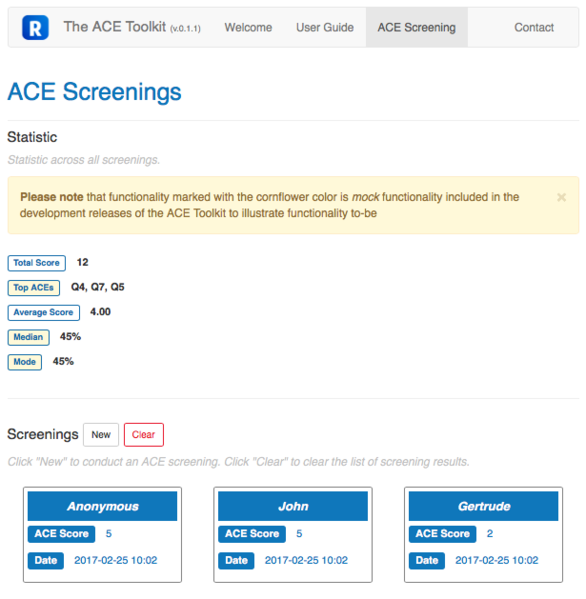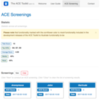Following off of the work I did in part two of our blog post series on the development of technology for ACEs, where I tried to map out some of the possible needs and areas of functionality we could consider, the next step should be to try and build early-stage mockups and prototypes addressing some of these needs; and validate that the needs are indeed addressed in useful ways.
About a year or so ago, I built a working prototype of a subset of the functionality I envisioned could be useful in an "ACEs Toolkit" for therapists, doctors, social workers, and teachers.
At the time I was very eager to build some working tools and get them in the hands of professionals as soon as possible, and I anticipated the needs and wants of these stakeholders as a means of catalyzing a design and development process.
I tried to describe a problem statement and value proposition, and they are located on https://github.com/resixorg/ace-toolkit and https://github.com/resixorg/ac...it/wiki/ACE-Screener.
The working prototype is available as http://resixorg.github.io/ace-toolkit/, and it contains an early working prototype of an electronic version of the ACE survey built for screening a cohort of people (like, e.g., a group of students) and a select few statistics. In the early prototype, some of the statistics are even mocked up, i.e. they do not do actual computations.
For a designer/developer like myself, it's always a wonderful experience to go from problem statement to working prototype, but one inherent risk in doing so too quickly is that you don't get the stakeholders involved nearly enough to really understand the problem space and, as a result, that you end up developing designs that are not addressing the needs well enough.
That's where the design thinking strategies for creative design come in. They describe, among others, how elements of empathy with the users, combined with rapid, agile prototyping, are key to 1) getting to the core of needs and 2) discovering the best ways of addressing these needs.
As you may know from part two of this series, I have a backlog of ideas and concepts that I envision could be relevant to explore (and perhaps relevant to implement), but I must stay honest about the fact that I am not the domain expert here.
However, many of you guys are indeed domain experts and I need your help to explore the inspiration space and understand your needs and requirements well to be able to contribute with relevant tools.
To limit the scope of the first product that we will build - that is, for us to focus on the most important functionality - I suggest that we start out with exploring what could be useful technology-backed tools, processes, and methods to have available for therapists, doctors, social workers, and teachers.
After the exploratory phase, it is my aim that we build some early-stage process descriptions and wireframe mockups and discuss those, iterating a couple of times before building an actual working prototype that can be used on smartphones, tablets, and in web browsers.
The First Question
So, all you good people in the roles of therapists, doctors, social workers, teachers and other resource-oriented roles dealing with people that are (perhaps) living with ACEs: what are your most urgent/pressing/challenging needs in relation to processes, tasks, and methods that you would like to be easier to perform, more accessible, more available,more scalable, easier to share, etc. (you can look at the mind map in part two for inspiration)?





Comments (0)